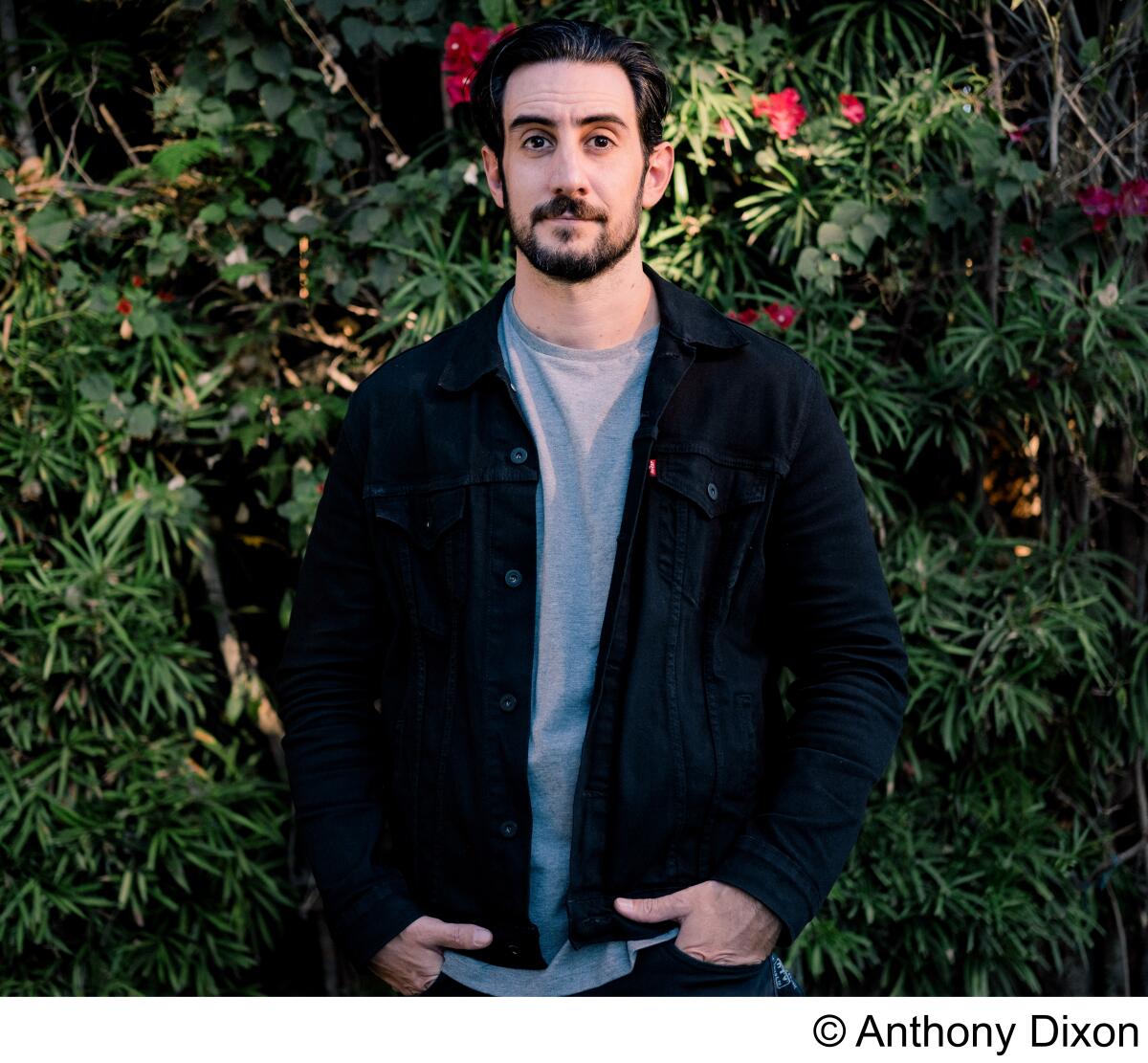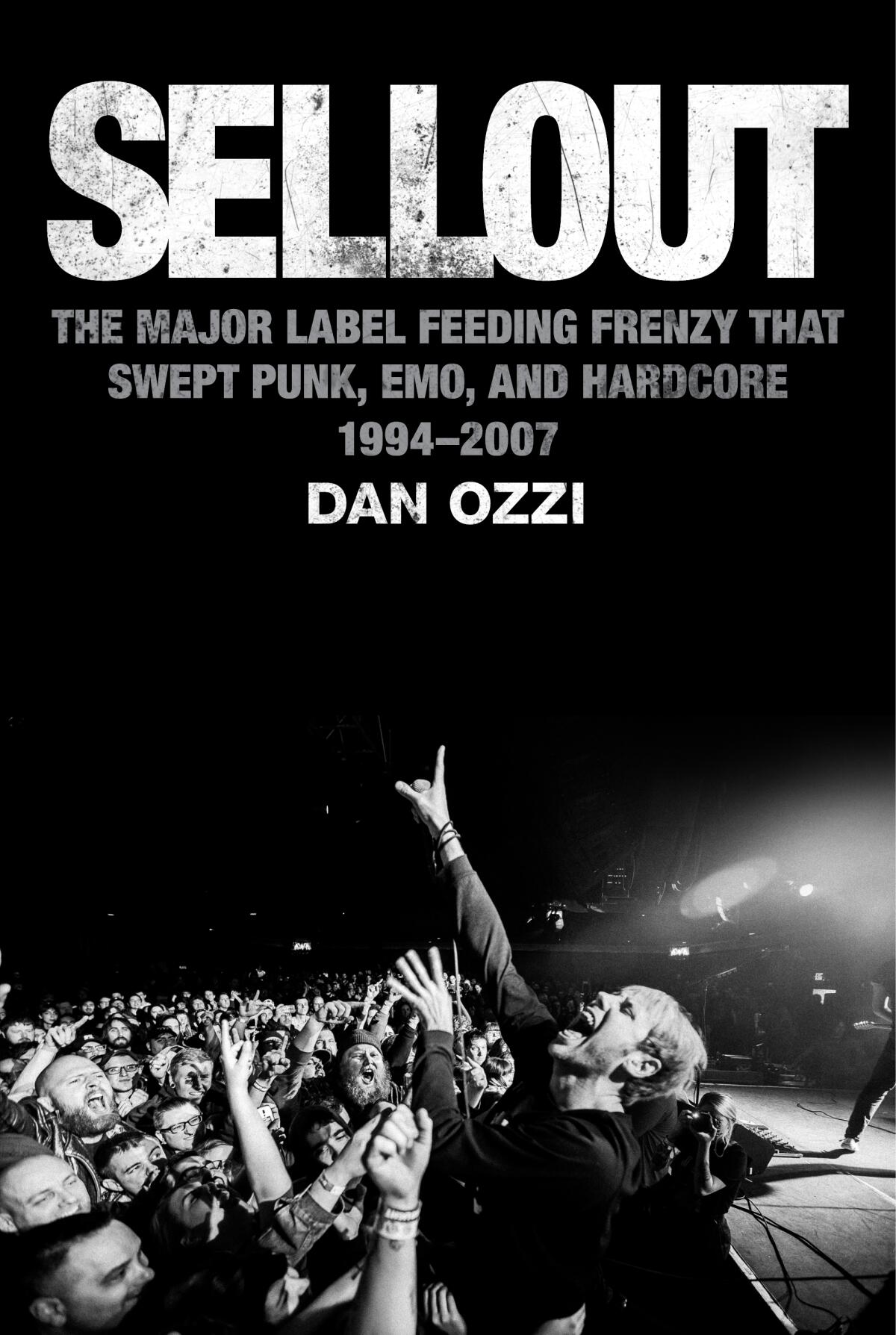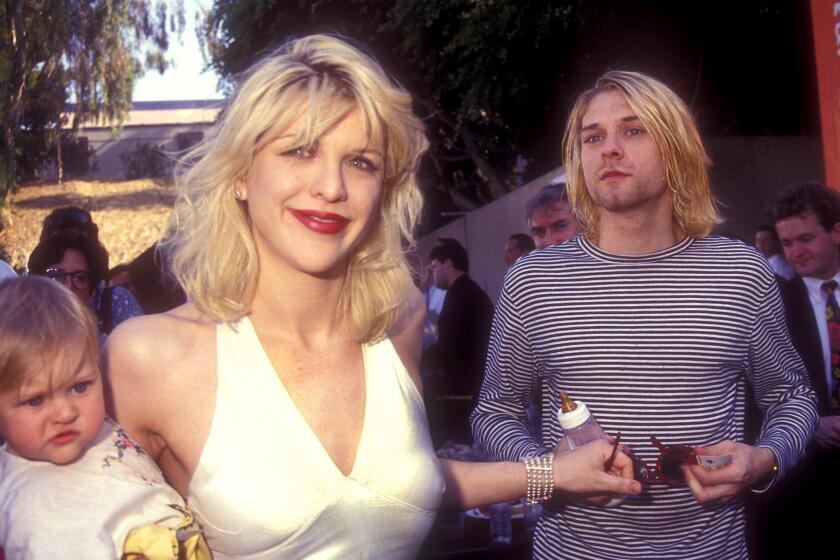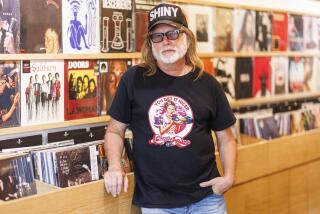Review: Remember selling out? A new book clocks the last generation of indie bands that went big

On the Shelf
Sellout: The Major-Label Feeding Frenzy That Swept Punk, Emo, and Hardcore (1994-2007)
By Dan Ozzi
Mariner: 416 pages, $28
If you buy books linked on our site, The Times may earn a commission from Bookshop.org, whose fees support independent bookstores.
“Selling out” is a phrase whose significance depends on the decade into which you were born. Thirty years ago, when Nirvana broke down the barriers between the mainstream and the underground, the stigma of selling out — at least among certain groups and certain fans — was severe. The decision to sign with a major label broke up bands, split scenes and made a handful of people very, very rich.
To those who came of age during a great recession, a Trump presidency or a pandemic, selling out is as operative a concept as an eight-track tape. At a time when Metallica is cozying up with Mercedes-Benz and Megan Thee Stallion is collaborating with Popeyes on her signature brand of Hottie Sauce, the notion of a band pledging to stay indie forever seems prudishly strange, like a TikTok video of a pilgrim churning butter.
In between then and now came the last great wave of major-label acquisitions — the twilight era of the sellouts. Fans of Jawbreaker, Jimmy Eat World, My Chemical Romance and other latter-day indie bands read about their struggles in the places where they’d found them: in fanzines or on the internet. Dan Ozzi’s “Sellout: The Major-Label Feeding Frenzy That Swept Punk, Emo, and Hardcore (1994-2007),” published recently by Mariner Books, offers a corrective, exploring how 11 bands emerged from obscurity to become major-label artists.
Ozzi begins with the moment when the shifting sands of alternative rock made it possible for musicians to consider a career. After Nirvana, independent artists realized that not only could their band be their life, it could be their livelihood as well.
No one benefited more from this frenzy than Green Day, who rose to acclaim at the all-ages punk club 924 Gilman Street, the epicenter of the East Bay scene, where major-label bands were regarded as literal scum. When Green Day signed to Reprise Records, a subsidiary of what was then Warner Bros., the chart-topping singles, multiplatinum records and dozens of awards that followed set a new standard of success for punk bands. These accolades came at a price: Green Day was banned from performing at Gilman Street and shunned by its original fans.
What makes “Sellout” so engrossing is that it profiles both the artists and the suits — the label heads and their A&R reps. Ozzi not only provides a rigorously researched look at how labels targeted bands and fought to sign them; he also amasses an impressive number of firsthand accounts of major-label talent scouts acting like major league sleazeballs.
Courtney Love talks with Kurt Cobain biographer Charles R. Cross about the still-resonant depths of her late husband’s breakthrough 1991 album, ‘Nevermind.’
Tales of steak dinners, helicopter rides and strip club outings on the company dime make it clear the bands and suits came from different worlds. Loren Israel, who doggedly pursued Jimmy Eat World for Capitol Records, recalled his early struggles to get the media to pay attention to the band. “We couldn’t get them any press, so you know what I did. I wrote their press reviews and sent them to Maximum Rocknroll and Razorcake or whatever their f— fanzines were called.”
Israel couldn’t have sent reviews to Razorcake in 1996 because it didn’t exist until 2001. He likely meant Flipside, a zine that Jimmy Eat World and its fans would have read from cover to cover. (Full disclosure: I wrote for Flipside and still write for Razorcake.) To Israel, these were interchangeable rags with a limited reach, stepping stones to bigger and better things. But to fans, they meant (and mean) so much more.

Each chapter in “Sellout” follows a different band, but they share a similar structure: Indie band forms, establishes modest popularity, considers offers from A&R reps and wrestles with the decision to sign. This gives the book a predictable rhythm, but it’s in the aftermath of the signings that the chapters diverge.
It isn’t exactly a spoiler to say that none of the bands featured in “Sellout” became as big as Green Day. Part of the book’s appeal lies in rooting for bands to beat the odds — even when you know they won’t. As a result, the bulk of the stories in “Sellout” are cautionary tales.
Not surprisingly, the bands that were the least worried about selling out became the most successful. The boys in Blink-182 were wannabe rock stars who happened to play poppy punk rock. No hang-ups there. But Jawbreaker, who repeatedly assured its fans it would never sell out and agonized over the decision, was practically pilloried for signing a deal with DGC. Not only did Jawbreaker not hit the big time, the band broke up.
Another factor in weathering the sellout storm was location. Bands from culturally remote places, like Jimmy Eat World of Mesa, Ariz., faced a much weaker backlash. “The very local scene in Arizona was more concerned that we don’t get screwed over rather than selling out,” says singer Jim Adkins. “It was a supportive skepticism rather than thinking we’d abandon our creative ideals.”
In “Mutations,” veteran hardcore writer and musician Sam McPheeters channels a movement that was strident, exasperating and revolutionary.
As the stories progress, patterns emerge. There’s a fascinating parallel between the labels’ struggles to convince bands of their street cred and the bands’ struggles to convince fans they hadn’t lost it. Who was kidding whom? That’s not a question Ozzi examines.
At the intersection of punk and commerce is a great deal of denial, useful self-deception on both sides. The artists maintain they’ll stay true to their roots, meaning they’ll never change — which is a strange relationship for an artist to have with their art. The labels, meanwhile, convince themselves they can bend the bands to their will and make hits — a strange relationship to have with an artist you’re pursuing for their art. These incompatible positions drive much of the conflict in “Sellout.”
The bands come and go but they don’t get any wiser, while the suits keep moving up the corporate ladder. Ben Lazar, a former A&R rep for Island Def Jam, believes the concept of selling out is a bogus construct that does more harm than good. “For a scene that prides itself on authenticity, it’s such a bunch of f— bull—.”
Of course, there are plenty of indie artists who have never sold out and never will, but for Ozzi, an artist holding a label at arm’s length is like an alcoholic telling themselves they’ll have just one more. “No band ever thinks they’re ever going to sell out,” he writes. “Until, one day, they do.”
To a Gen Xer like me, the “sellout” label still carries the stench of shame. It was a lot easier to swear allegiance to an indie artist when a commercial path to success didn’t exist. Time marches on, and while hearing your favorite punk rock song during a car commercial may be easier to swallow when you’re considering your kid’s college tuition, it still hurts.
“Hollywood Park,” a new memoir from the frontman for the Airborne Toxic Event, recounts his childhood in L.A.’s Synanon cult — and his recovery.
Ruland’s next book, “Corporate Rock Sucks: The Rise & Fall of SST Records,” will be published in April.
More to Read
Sign up for our Book Club newsletter
Get the latest news, events and more from the Los Angeles Times Book Club, and help us get L.A. reading and talking.
You may occasionally receive promotional content from the Los Angeles Times.







